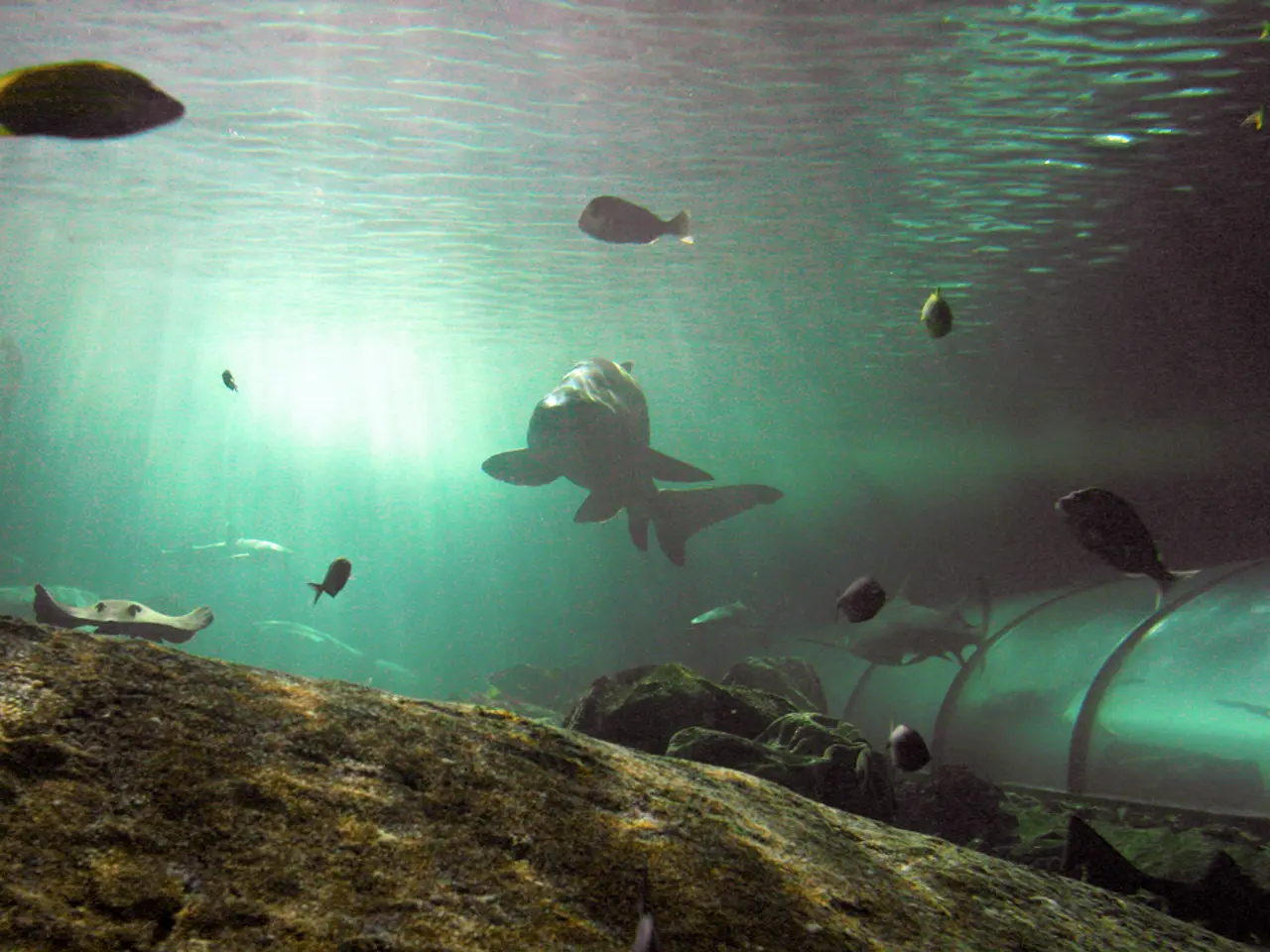Guide to Capturing Memorable Images of Worm-Like Aquatic Creatures
In the captivating world of underwater photography, eels and eel-like fish present a unique challenge due to their elusive and often camouflaged nature. However, with the right techniques and equipment, it is possible to capture stunning images of these fascinating creatures.
One key strategy is to make use of good lighting. Shooting on sunny days allows sunlight to penetrate the water, enhancing colours and sharpness in photos and videos. This natural light helps to highlight the eel's details, reducing murkiness and creating clear, vibrant images.
Getting close to the subject is another essential technique. Approaching eels carefully but closely results in clearer, better-composed shots. While it is important to respect safety and avoid disturbing or aggravating them, many eel species can be approached with care.
Framing your shot thoughtfully is also crucial. Positioning the eel within contrasting surroundings prevents it from blending into the background, as eel bodies are often camouflaged in their environment.
Choosing durable underwater cameras is vital for close-range shooting of elusive subjects like octopus or eels hidden in crevices. Cameras like the GoPro Hero 12 are ideal for shallow snorkeling or diving, allowing flexible shooting in a range of conditions.
Understanding eel behaviour and habitat is also essential. Many eel-like fish often hide in crevices or come out at night, so patience and observation are key. Knowing their elongated, anguilliform body shape and slow cruising habits near the bottom can guide you to anticipate their movements for better timing.
Post-processing plays a significant role in enhancing the image's vibrancy. Adjusting colours in photo editing software can restore true hues and add a touch of vibrancy to the final image.
A lesser-known tip is to focus on the eel's eyes in close photographs of an eel's head. This maintains the eel's character in the image and allows the viewer to appreciate what the eel might be thinking or feeling.
Going wide in eel photography can result in even more striking images. A fisheye lens captures the habitat of the eel and negative space in the form of water, giving depth and contrast to the image. The trick to shooting wide with eels is to inch very slowly towards the eel and shoot from the side of its head.
Eels and eel-like fishes tend to prefer medium-sized substrate with good holes for hiding. In the tropics, they often hide among a network of tunnels formed in coral heads. In cold water, they can be found on rocky slopes and rock piles.
Eel photography often creates an unusual symmetry with a comical feel when shot from directly in front of an eel or elongated fish. Filling the frame with the eel is important to prevent losing sight of it with surrounding substrate.
Some eels can be difficult to find, but knowing where to look can help. Tropical destinations with moderate diversity and moderate to low abundance often have a lot of eels. Locally in California, Casino Point on Catalina Island is a favourite place to find moray eels.
It is important to note that eels should never be fed to get them out of their den. Some eels may learn to associate divers with food and may bite if they mistake a hand for food. Instead, sitting quietly at the entrance of their den may encourage them to approach slowly. Shining a light directly at them and blowing a lot of bubbles can cause them to shy away.
With these strategies in mind, you are now equipped to capture clear, striking images of these often camouflaged and elusive creatures. Happy underwater photography!
- To emphasize the eel's colors and details, consider shooting on sunny days for better lighting.
- Carefully approaching eels allows for closer, well-composed shots without disturbing them.
- Proper framing can distinguish the eel from its surroundings and boost image quality.
- Investing in a durable underwater camera, such as the GoPro Hero 12, is beneficial for taking close-range shots like that of elusive creatures like eels.
- Learning about eel behavior and habitat is essential to predict their movements and capture better photographs.
- Adjusting colors during post-processing can further enhance the image's vibrancy.
- Focusing on the eel's eyes in close-up photos brings personality to the image and piques the viewer's interest.
- Using a fisheye lens can create more captivating images by capturing the eel's habitat and providing depth to the photograph.
- Tropical destinations with moderate diversity often have more eels for intriguing photography opportunities.
- Players in outdoor-living and home-and-garden categories may find eel photography a rewarding pastime, as it encourages appreciation for the colorful world found beneath the surface of our water bodies.




